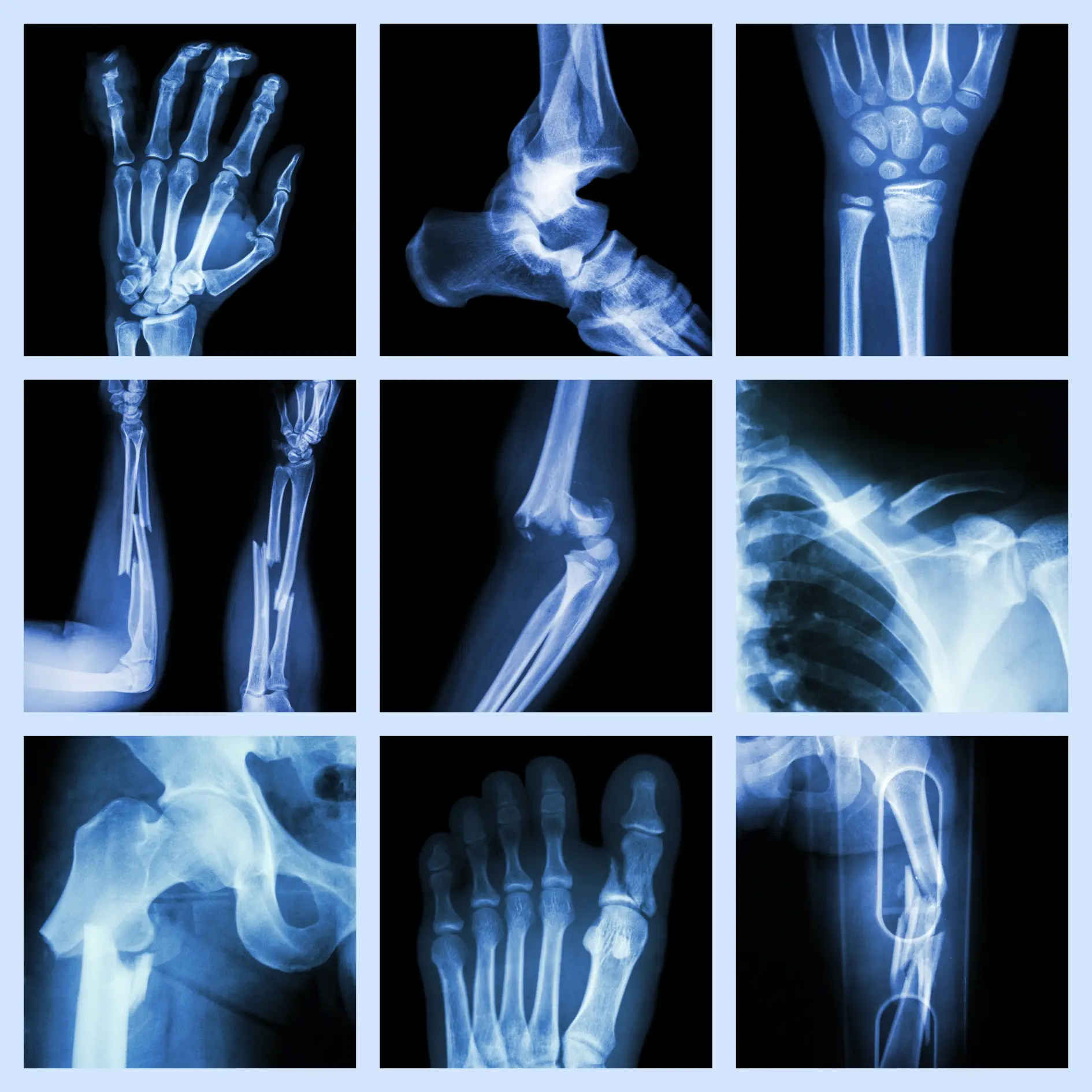Ξ Home / Trauma
TRAUMA AND FRACTURES
Bone fractures are extremely common resulting in isolated fractures and dislocation, we treat the full range of these injuries, no matter how complex, including long bone fractures of upper and lower extremity. we also specialize in treating post-traumatic conditions such as malunions, non-unions and osteomyelitis (infection to bone).
TYPES
- Simple fracture – Bones are fractured without involvement of skin
- Compound fracture -The skin is pierced by the bone or by a blow that breaks the skin at the time of injury. The bone may or may not be visible in the wound.
- Comminuted fracture – The bone shatters into three or more pieces.
CAUSE OF TRAUMA
- A fall, a motor vehicle accident, or while sporting activity.
- Osteoporosis. It weakens the bones leading to fractures.
- Overuse. Repetitive motion has more force on bone resulting in stress fractures. These are common in athletes.
SYMPTOMS OF TRAUMA
Symptoms of a fracture or a post-traumatic orthopaedic condition can include:
- Pain, ranging from mild to severe
- Swelling
- Bruising
- Deformity
- Restricted joint movement

Diagnosis
Fractures and post-traumatic orthopaedic conditions are typically diagnosed with a combination of a physical examination and imaging.
Fractures are usually diagnosed using X-rays. Depending on the severity and location of the break or post-traumatic injury – and the extent of damage to surrounding tissue – other types of imaging might also be used to make a diagnosis. These include:
- Arthrograms (X-rays of the joints)
- Computed tomography (CT)
- Magnetic resonance imaging (MRI)
Other diagnostic testing might be used instead of or in addition to those tests. Identifying a bone infection, for instance, calls for blood work, while diagnosing a compressed nerve might require a nerve-blocking injection.
Treatment
Fractures of the pelvis, upper and lower extremities, and post-traumatic orthopaedic conditions can be treated with surgical and nonsurgical procedures, depending on the condition.
Common nonsurgical treatments include:
- Immobilizing devices such as casts, splints, braces, and traction
- Medications, such as antibiotics to resolve infections and nonsteroidal anti- inflammatory drugs to treat arthritis
- Physical medicine and rehabilitation
Surgery is sometimes necessary to properly treat breaks or trauma injuries that are complicated, severe, or resistant to healing. Surgical treatments include fixating (keeping together) the broken parts of the bone using metal pins, screws, or plates.
Get Second Opinion from Expert Ortho Surgeon
Dr. Ram Pradeep Konakalla is one of the Best Orthopaedic Surgeon in Hyderabad | Joint Replacement Surgeon | Pain Management Specialist | Foot & Ankle Surgeon
2/3 RT, Opp. Post Office, Vijaya Nagar Colony, Masab Tank, Hyderabad, Telangana 500057
dr.ramkonakalla@gmail.com
Services
General Orthopaedics
Total Knee Replacement
Hip Replacement
Revision Surgeries
Arthroscopy
Sports medicine
Quick Links
About
Book Appointment
Gallery
Testimonials
Contact
Privacy Policy


